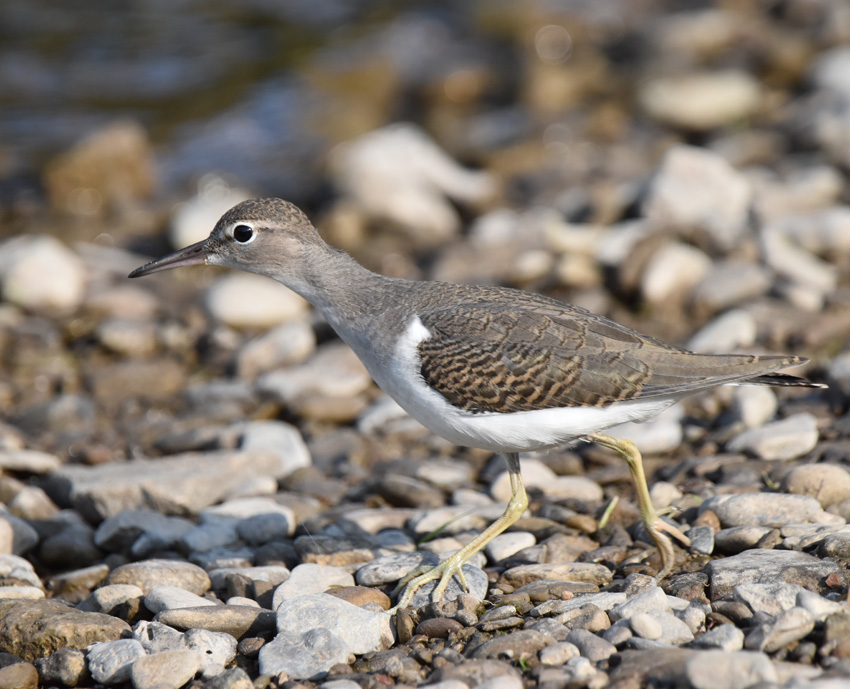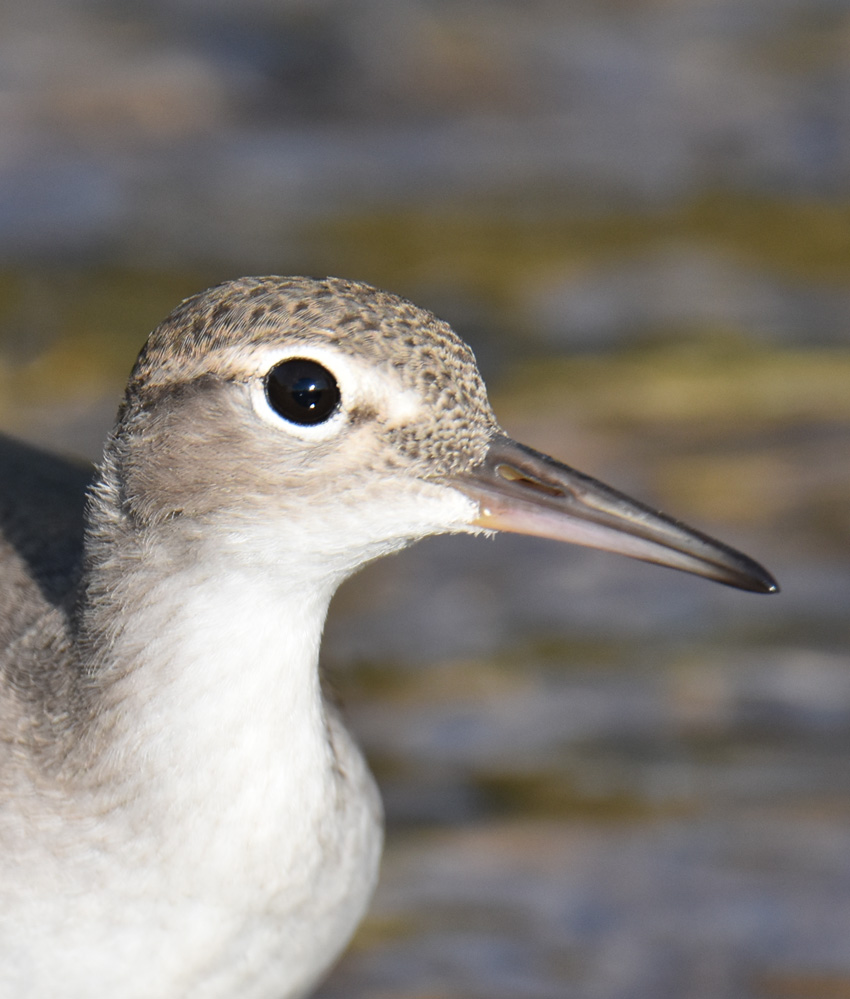While at the Credit River in mid-July, a juvenile Spotted Sandpiper flew in and landed only a few yards from me. It was young enough that it didn’t care that I was there and it busily bobbed its way up and down the beach checking for food. It isn’t the first Spotted Sandpiper I’ve seen this summer. I’ve seen adults along the Credit, Sixteen Mile Creek and Lake Ontario. In other years, I’ve seen them along the St. Lawrence, beside small lakes in the Canadian Shield, and along the edge of the La Have River in Nova Scotia. I’ve even seen them away from water in a meadow park over an old city dump. Spotted Sandpipers seem to like southern Canada!
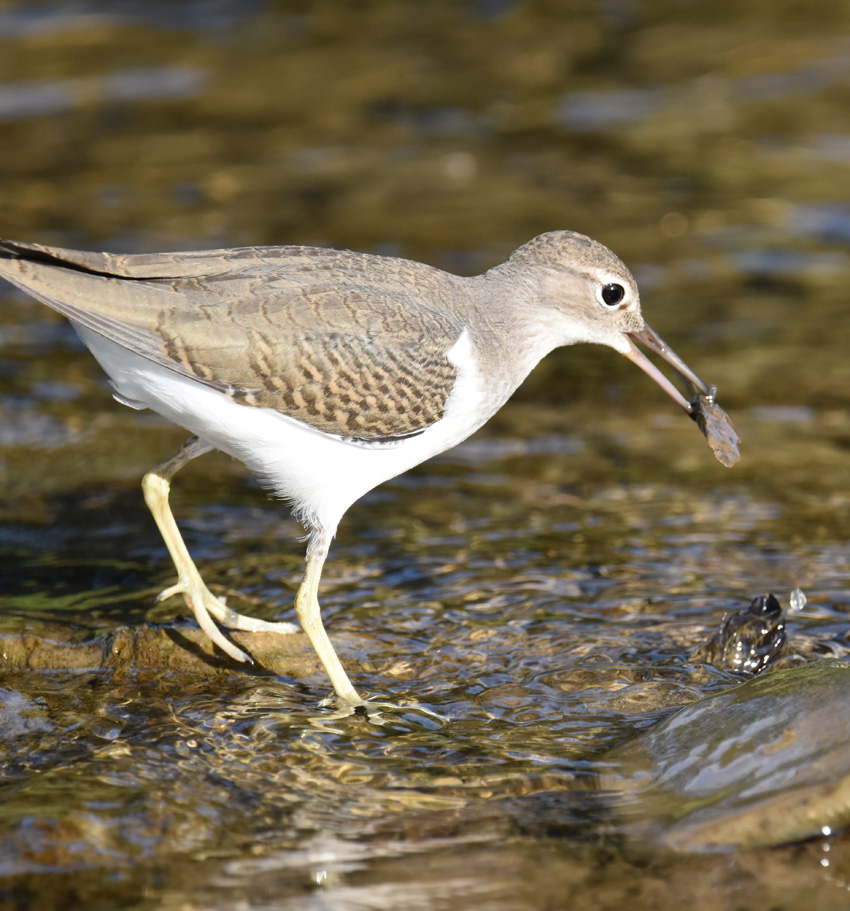
This juvenile Spotted Sandpiper caught a rock: unfortunately I was watching. How embarrassing.
Why Does This Sandpiper Have No Spots?
You may doubt my id skills when you look at this sandpiper: where are its spots? Juvenile Spotted Sandpipers have a pure white underside. It’s the adults in breeding plumage that have a generous collection of vivid dark spots. In the “off season” the adults also get plain.
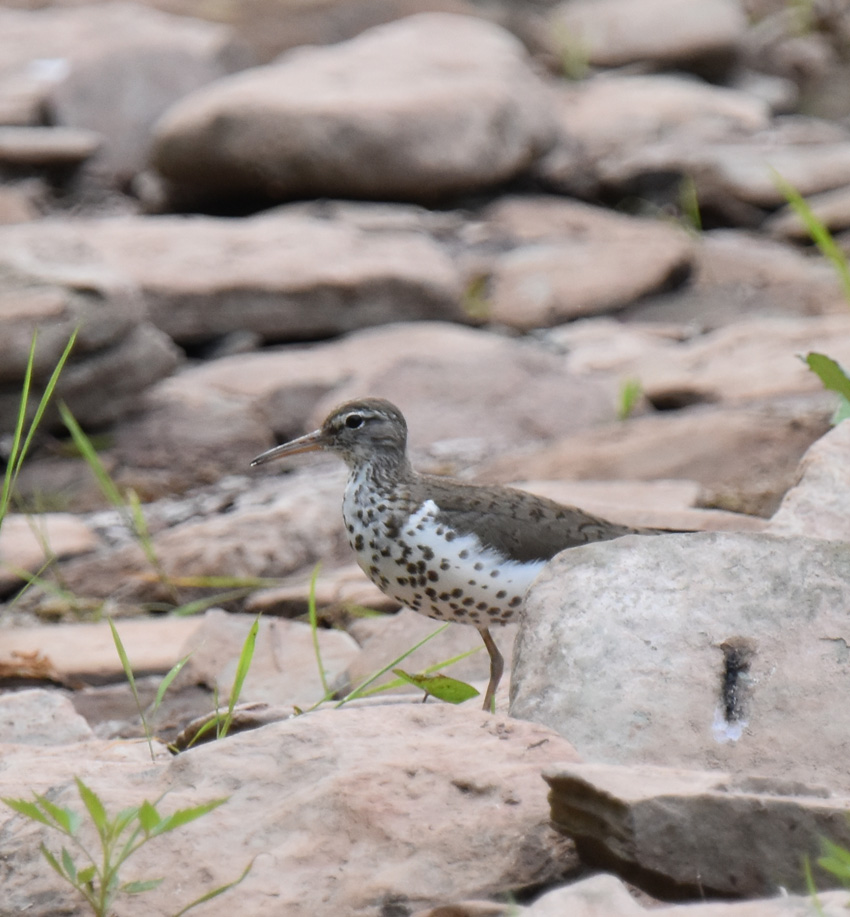
Here’s an adult Spotted Sandpiper I met at Sixteen Mile Creek in Oakville in early July.
Why Are All My Photos of Spotted Sandpipers Fuzzy?
These common birds can be a bit tricky as subjects for a decent photo. They like to bob their tails while they hunt. In fact, their entire body may bob. And they don’t waste time standing and plotting. They are on the move fairly steadily and quite walk quite quickly. It’s easy to end up with a photo where one end is in sharp focus and the other is blurred. Nothing like a challenge to keep things interesting!
What Do Spotted Sandpipers Eat?

After finishing its explorations of the sand and pebble beach, the Sandpiper flew across the Credit to poke among the stumps, driftwood and boulders.
As you might expect from its wide range and varied habitats, Spotted Sandpipers are not fussy eaters. I’ve seen them eating worms, getting something small out of the water, and catching insects off of grasses. The AllAboutBirds website adds that they will eat snails, crustaceans, small fish and lots of types of insects both aquatic and terrestrial.
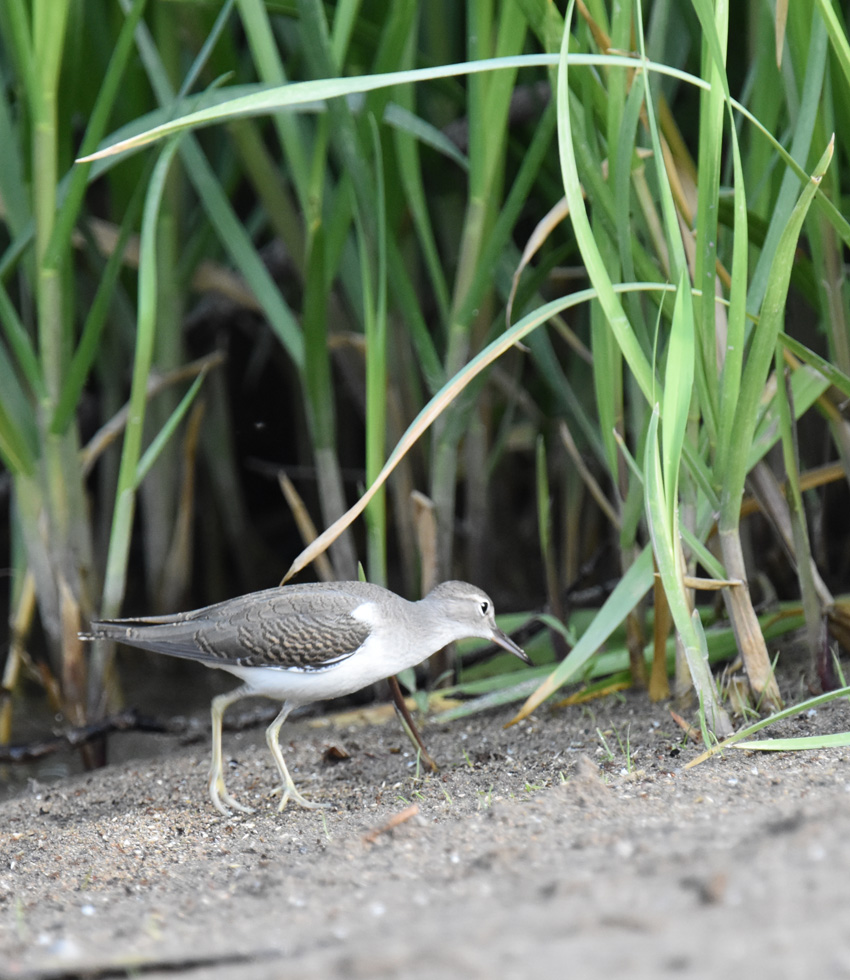
It found a few quick snacks among the grasses and cattails, too.
Being generalists like this usually helps a bird be successful. When checking the range map, I found out that Spotted Sandpipers are found throughout North America—even in the mountains!
We’re considering a vacation in the Rockies. I see on eBird that Spotted Sandpipers have been reported in several years at Tunnel Mountain and the Mulestone Picnic Area. Maybe I’ll be able to add another spotting of a Spotted Sandpiper to my list if we do visit Banff!
Related Reading
- What Robin-sized Sandpiper is Walking Along the Shore of the Oakville Storm Water Pond?
- What Small Beach Bird Has a Black Neck Band and Yellow Legs?
- A Killdeer Trills, Lies Flat, Fans its Tail and Spreads Its Wings
- A Lesser Least Sandpiper
- The Colours of Early Summer at 16 Mile Creek in Oakville Ontario
- What Ontario Fish Has Red Around the Eye and Maybe a Trout Shape?
- Where To Find Spring Wildflowers West of Toronto at Sixteen Mile Creek In Oakville Ontario
Join In
Do Spotted Sandpipers nest near you? Please share your sighting with a comment.

